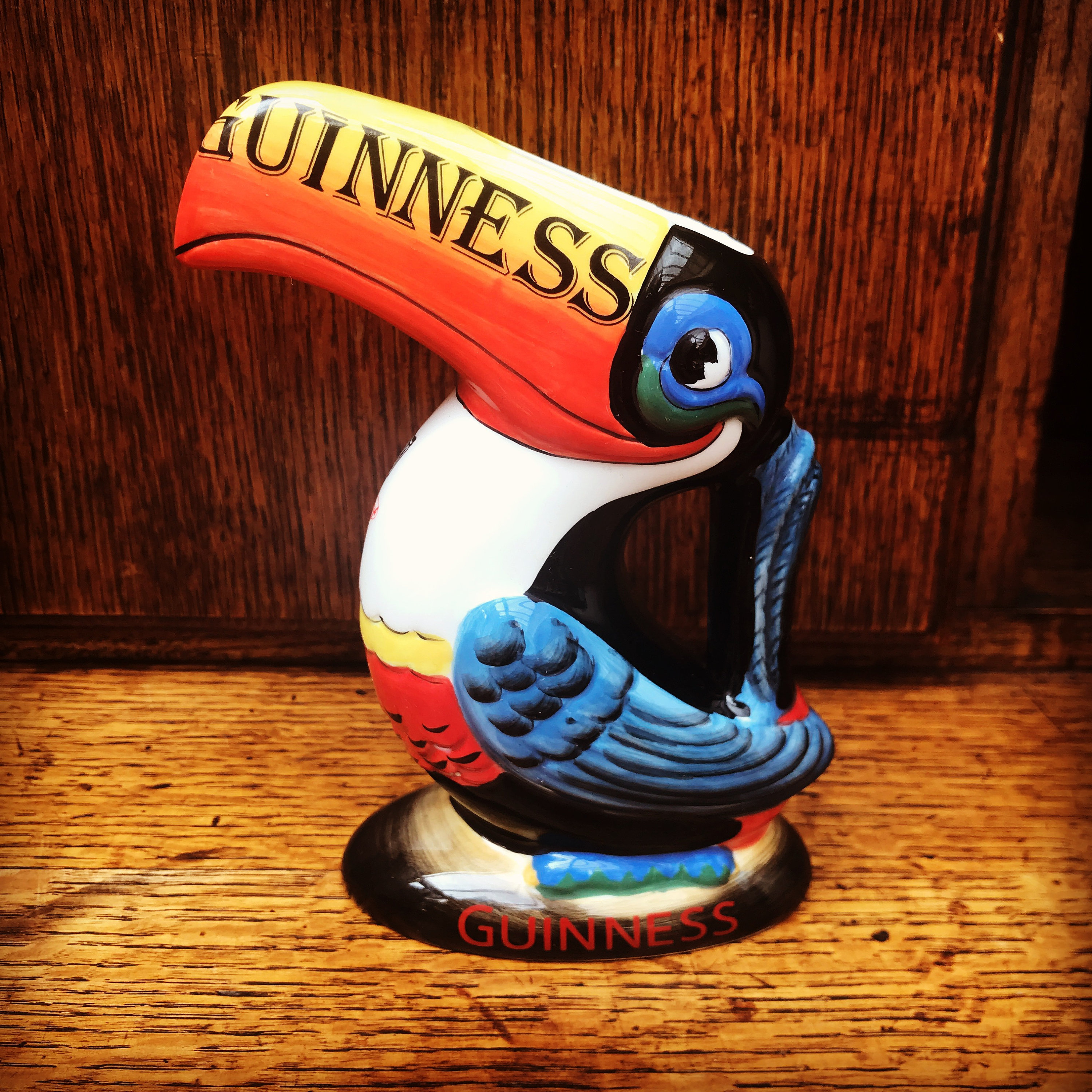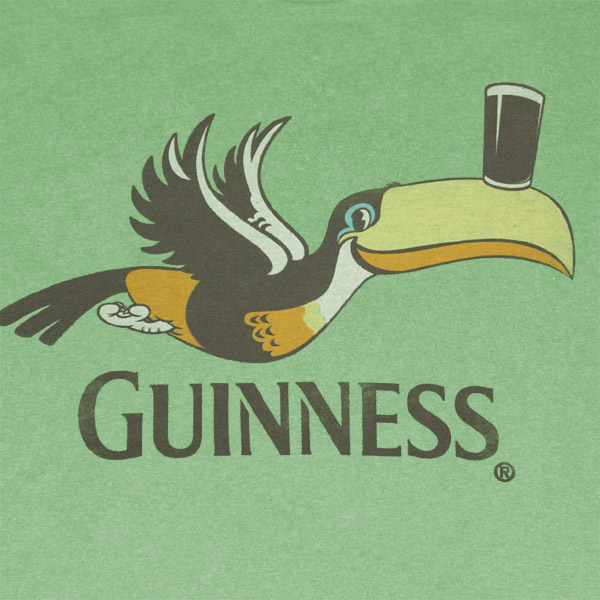


The man responsible for the iconic bird and his animal companions is the English illustrator and draftsman John Gilroy. It was then, in 1930, that the story of the Guinness toucan began. However, by the late 1920s, sales were declining, and in 1929, Rupert Guinness, then chair of the company, ran the first-ever Guinness print ad with the slogan “Guinness is good for you.” The very next year, the brewery hired advertising firm S.H. In 1862, the company adopted an Irish harp as their logo and trademarked it in 1875. By the late 19th century, Guinness was one of the top three breweries between Britain and Ireland. ( Stephen Sweeney / Geograph Ireland)įor nearly two centuries of existence, the brewery had almost no need to formally advertise, allowing word-of-mouth to sell the beer, and sell it did.

James's Gate in Dublin, where Arthur Guinness signed a 9,000-year lease in 1759. The entrance to the Guinness brewery at St. Forty-one years later, when other Irish breweries chose to play it safe on the domestic market to avoid treacherous sea voyages, Guinness was available as far away as New Zealand. Guinness had made it to America, where its legacy would continue to grow as waves of immigration grew the Hibernian population there. On the 16th of October, 1817, eight barrels of Guinness porter made the intrepid journey across the Atlantic to a man named John Heavy in South Carolina. That Guinness is still the most iconic dark beer in the world should be proof of Arthur Guinness’s forward-thinking business savvy. By 1821, the brewery had perfected its recipe for porter. In 1799, dark beer called “porter” (primarily for the profession of those who drank it) became popular in Dublin instead of adding porter to his offering of brews, Guinness halted production of all other styles and chose to focus entirely on the dark beer. Ten years later, in 1769, Guinness exported six barrels of beer to England. The 9,000-year lease might have seemed a risky move to some, but it quickly became abundantly clear that the bold move paid off. Guinness had run a small brewery back at home in County Kildare, but at the age of 34, wanted to try his luck in the country’s capital. On New Years Eve, 1759 Arthur Guinness signed a 9,000 year lease on a run-down building in the neighborhood of St. One of the first Guinness toucan posters to feature what would become one of the brewery's most recognizable mascots. The origins of the Guinness toucan are more playful than logical-an apparent non sequitur that launched one of the most memorable beer ad campaigns in history. What does a bird who makes its home in sunny South and Central America have to do with beer from the Emerald Isle? But many don’t know the story behind the smiling Guinness toucan. The image is instantly recognizable for anyone who’s ever enjoyed a creamy pint of the famous beer and today can be seen on merchandise ranging from a Guinness toucan mug to Guinness Toucan Metal Sign and bottle openers. This iconic vintage Guinness poster decorates the walls of Irish pubs and homes of beer lovers worldwide. With two pints of the black stuff balanced easily on its giant beak. “Guinness is good for you” proclaims the text.


 0 kommentar(er)
0 kommentar(er)
